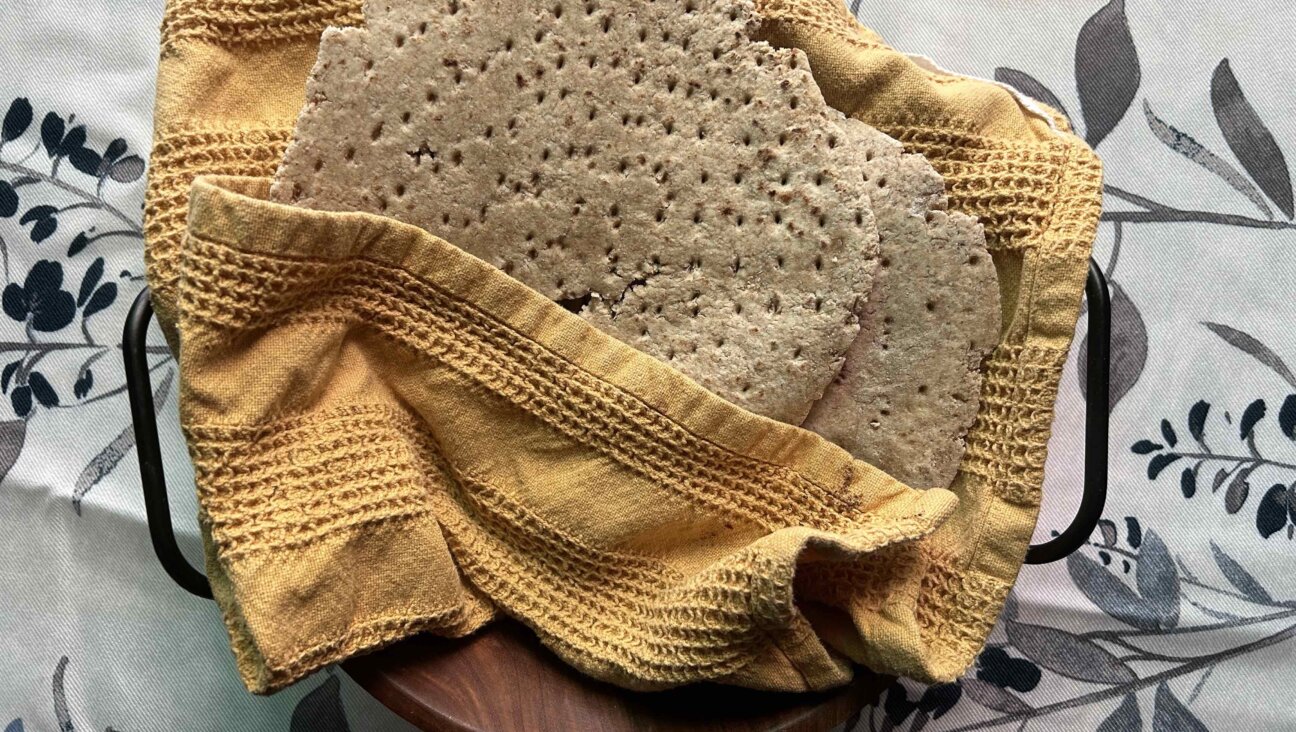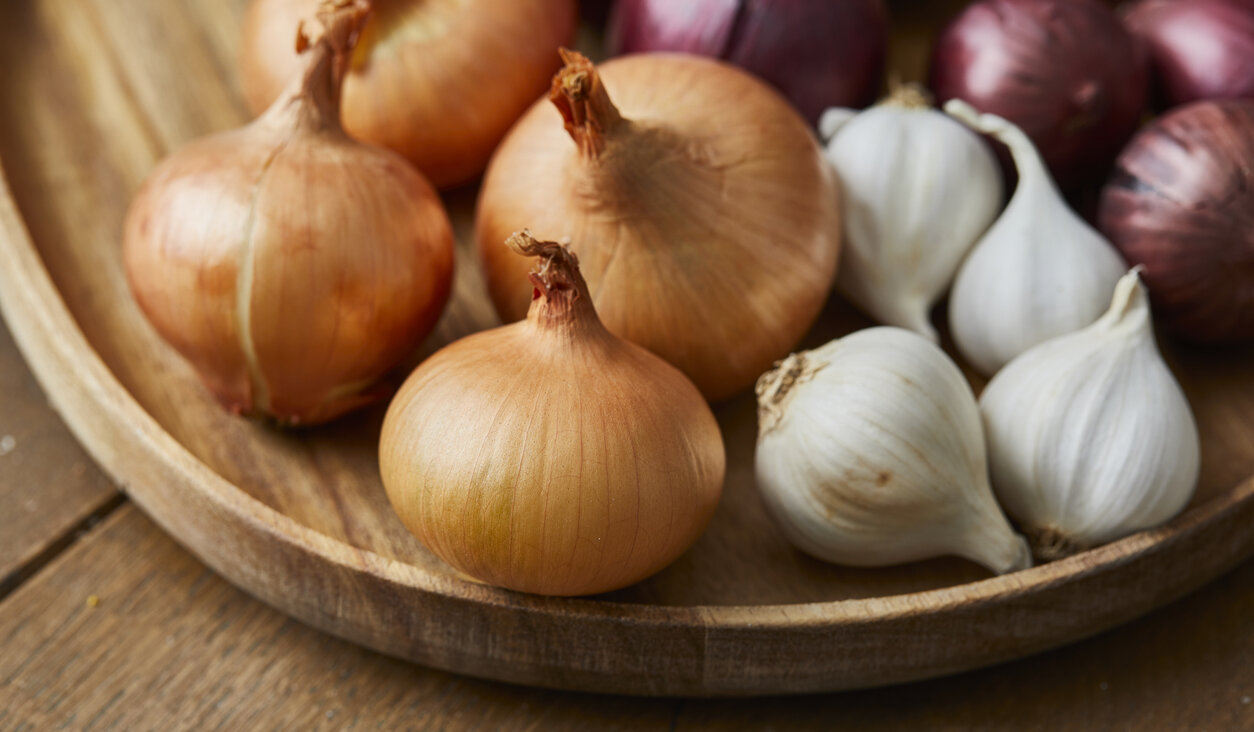Lessons From a Kosher Butcher

Image by Courtesy of Prime Butcher Baker
Jews are famous for their love of meat and potatoes (cholent, anyone?). But how many of us know how to pick the perfect cut of meat for any particular occasion?
Hoping to move beyond our butcher’s pre-packaged meat selections, we talked with Larry Reyes, head butcher of Manhattan’s newly opened Prime Butcher Baker market — with a butcher counter specializing in dry-aged steaks — about what makes for a good piece of meat, how to work with less expensive cuts, and more.
Before starting at Prime Butcher Baker, Reyes worked at nearby butcher Park East Kosher Butcher and before that, he worked at gourmet (and non-kosher) market Citarella.
Lucy Cohen Blatter: What should/can you expect of a butcher?
Larry Reyes: A butcher should be knowledgeable and skillful — someone who knows their meats and knows how to cook them. Butchers should know if the meat is tender or not, the best method of cooking, the best seasoning to use and they should know how to make it as simple as possible for the home cook.
What should people look for when buying kosher meat?
When going to your local butcher you should always look for color and marbling. Non dry-aged meat will have a nice bright red color where as aged meat should be a dark red color.
Marbling [the dispersion of fat throughout the meat] tells you how juicy the piece of meat is. If there is more, the piece is fattier, but juicier. The bone also helps keep retain flavor and keeps the meat juicier.
What do you recommend for the most flavorful cuts of beef?
Rib eye steak is the king of kosher steaks. The surprise steak, which is the tail piece of the rib eye, is considered to be the best piece of all. The meat is so flavorful that it is almost impossible to mess it up! All people have to add is salt pepper and olive oil.
The center of the rib eye is the filet — it is the kosher filet mignon.
How would you recommend cooking a rib eye?
The best way to cook it is either to grill or to use the broiler. The broiler allows the meat to cook faster because it goes up to 500 degrees — the faster the meat cooks, the juicer it is.
And what about other meats? What are the most flavorful cuts?
We also sell veal ribs, breasts and shoulder. Over Passover, I made two boneless veal breasts stuffed with farfel. The customer loved it so much, they had me make it again. The veal rib is very popular, and the shoulder of veal, too, because it’s very lean.
If you’re working with a veal roast, I always recommend searing it first and then throwing it in the oven — it’ll keep it juicier. The rib has a good amount of fat to keep in juiciness. But always be sure not to overcook.
Lamb ribs — the baby lamb chops — are amazing, and you can never go wrong with those. The flavor comes from the fact that there’s a lot of fat. All you need is to add a little salt, pepper, olive oil and some garlic. You can cook them on a grill pan or a George Foreman grill if you have one. I make mine with garlic salt.
Unfortunately, it’s the lamb and veal ribs that are most flavorful, they’re also the most expensive.
Is there a demand for more unusual meats in the kosher world?
We’re planning to start selling buffalo and venison. I have people asking for those. People ask for ground buffalo and buffalo rib-eye steaks. They are leaner than beef and have a lot more protein.
What can someone do when a recipe calls for a non-kosher cut of beef or a non-kosher meat?
If you want a substitute for pork, I would use veal. A veal chop can be cooked just like a pork chop. Rib eye can substitute for filet mignon.
If a recipe calls for strip steak, it is pretty much like a rib eye but leaner. Always get to know your local butcher and they can assist you with cooking questions and substitutes.
Which meats are worth the splurge and which cheap cuts are easy to doctor up?
Brick (a.k.a shell) roast would be the splurge. Brick roast comes from the chuck area, it’s one of the pieces of the chuck eye, but the animal doesn’t use that particular muscle much, so it’s tender, juicy and has a lot of marble in it. You don’t even need to sear it to lock in the flavor. It’s a really easy steak that’s difficult to mess up. Even if you overcook it (and go beyond medium) it’ll come out juicy.
Club steak is cheap — it comes from the chuck eye, too, but it isn’t as tender. It does have flavor, though. It’s great in a stew that can braise for hours.
And what about organic, grass-fed kosher meat, is it easier to find these days? Does it make a difference in terms of taste?
A lot of people buy organic chicken and some buy organic ground beef. Everyone wants organic, but they don’t want to pay the prices for it.
Since organic beef doesn’t sell as much, a lot of the time it’s vacuum-sealed and not as fresh. Sometimes when you open the package it can have a funny smell or taste. It’s a bit of an acquires taste.
The organic beef is a lot leaner, so it usually is better health-wise, but not necessarily flavor-wise.
A message from our Publisher & CEO Rachel Fishman Feddersen

I hope you appreciated this article. Before you go, I’d like to ask you to please support the Forward’s award-winning, nonprofit journalism during this critical time.
We’ve set a goal to raise $260,000 by December 31. That’s an ambitious goal, but one that will give us the resources we need to invest in the high quality news, opinion, analysis and cultural coverage that isn’t available anywhere else.
If you feel inspired to make an impact, now is the time to give something back. Join us as a member at your most generous level.
— Rachel Fishman Feddersen, Publisher and CEO
























